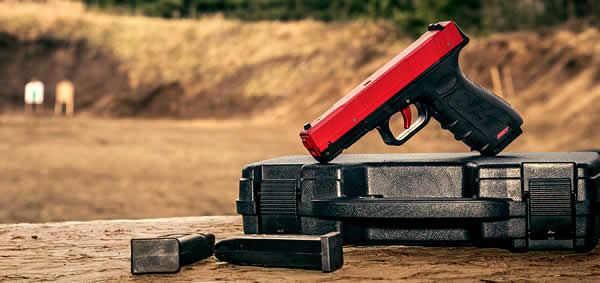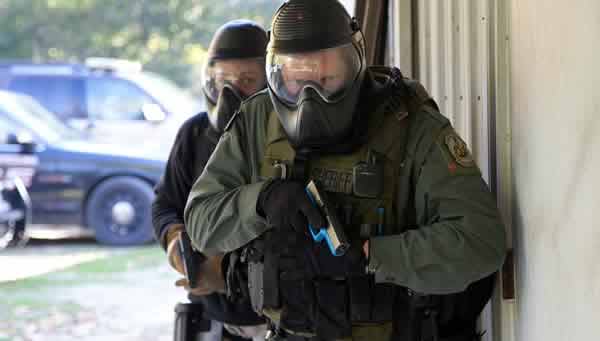
Lessons from Black Hawk Down
Part I: Nine personal defense truths through the lens of the Battle of Mogadishu.
Story and photos by Paul PawelaEditor’s note: As the 28th anniversary of the Battle of Mogadishu between US forces and Somali militiamen took place early last month, the author, having many close personal friends who fought in that engagement, sought to use the lessons learned in Mogadishu, as gleaned from Mark Bowden’s book Black Hawk Down, and apply them to the civilian world of personal defense. This is part one of the article. Part two will appear next month.
As a lifelong student of hoplology (the science that studies human combative behavior and performance), I am always researching and gathering as much credible and useful information on the subject of combatives as possible. If you are similarly inclined, then I recommend Mark Bowden’s Black Hawk Down as required reading on the application of both modern and urban warfare.
The popular book, as well as the Academy Award-winning 2001 film of the same name, depicts the courageous performance of US Army Rangers, Delta Force and SEAL Team Six operators during the now-famous battle in Mogadishu, Somalia. I studied the lessons learned and how they apply in other defensive situations, such as civilian personal encounters.
This article outlines key points from Bowden’s book and parallels that might offer you some personal takeaways from the hard-fought lessons of Mogadishu.
POINT ONE: The book Black Hawk Down states, “War was ugly and evil, for sure, but it was still the way things got done on most of the planet. Civilized states had nonviolent ways of resolving disputes, but that depended on the willingness of everyone involved to back down. Here in the raw Third World, people hadn’t learned to back down, at least not until after a lot of blood flowed. Victory was for those willing to fight and die.” Parallel: Violence and crime are also ugly and evil. Elitist politicians and others have methods and plans for solving disputes, but in the end, conflict is typically resolved by a military soldier, police officer or armed citizen. Victory, in the context of violent crime, goes to those who are willing to deal with it head on.
- one murder occurs every 34 minutes;
- one violent crime every five seconds;
- one robbery every 43 seconds;
- one aggravated assault every 24 seconds;
- one theft every 12 seconds;
- and one rape/sexual assault every two minutes.
POINT THREE: “Soldiering was about fighting … killing people before they killed you.” Parallel: Surviving a personal defense encounter is about doing whatever will get the job done, surviving at all costs. Sometimes that does, in fact, mean killing them before they kill you.
POINT FOUR: “What they lacked in sophisticated weapons and tactics they made up for with determination.” Parallel: A famous quote by Vince Lombardi goes: “Life’s battles don’t always go to the stronger or faster man. But sooner or later, the man who wins is the man who thinks he can.”
Criminologist Gary Klein’s now-famous study found that handguns were used in self-defense 2.5 million times between 1988 and 1993 in the United States. Of those instances, 54 percent – 1.18 million – were by women. Of note, out of the 2.5 million times that a gun was produced in self-defense, the weapon was actually fired only 8 percent of the time, underscoring that determination is key in refusing to be a victim.
POINT FIVE: “(In combat,) victory was for those who were willing to fight and die.” Parallel: According to an article by Melissa Soalt, an award-winning self-defense expert, when it comes to self-defense against an attacker or rapist, resistance is key. In her article, she quotes experts including Dr. Judith Herman, author of the best-selling book, Trauma and Recovery. Fighting back can be very effective, while pleading, reasoning or appealing to an attacker’s humanity is not, the latter being “almost universally futile,” notes Dr. Herman.
Also quoted is Sarah Ullman, an assistant professor at the University of Illinois at Chicago. She states, “By not resisting rape, women may be putting themselves at greater risk.” Professor Ullman’s research on resistance strategies concluded that a woman’s “level of physical injury is mainly determined by the offender’s use of violence” and initial blows struck, not because she fought back.
POINT SIX: “Survival depended on proactive soldiering. You constantly assessed your position and worked to improve it.”
Parallel: “To … not prepare is the greatest of crimes; to be prepared beforehand for any contingency is the greatest of virtues,” wrote Sun Tzu in The Art of War.
Or, differently stated, it is the inadequately trained individual who, under threat of violence, will panic or brandish a weapon or otherwise react hastily or in desperation. It may seem odd that knowing one is competent to
handle violence helps avert violence, but preparedness and confidence have, in actual confrontations, been sufficient to shut off an attack before it started, according to Colonel Jeff Cooper in Principles of Personal Defense.
What more can be said?
POINT SEVEN: “Hard, realistic, stair-stepped training made good soldiers, not the bulls**t macho attitude epitomized by the whole Hoo-ah esprit.”
Parallel: “Suffice to say, you can only develop realistic, stress-based workable responses to deadly-force attacks by practicing them full-speed, full-force and full-stress against a moving, thinking human being,” says Ralph Mroz, author of the best-selling book Defensive Shooting for Real-Life Encounters.
But perhaps Bruce Lee said it best: “The best preparation for an event is the event itself.”
Bottom line is your training should represent the actual encoutner with as much realism as possible.
POINT EIGHT: “You did what you were trained to do.” (A quote from the movie Black Hawk Down.)
Parallel: “Practice does not make perfect, only perfect practice makes perfect. If you practice crap for 20 years, all you will be is a crap master. Crap masters do not win gunfights,” says tactical expert Mac Fleischmann.
This is true with just about every real-life scenario. Consider this documented case: A police officer who is an experienced grappler apprehends a suspect. The fight goes to the ground, with the officer getting the best of the
suspect – until the suspect taps the shoulder of the officer and instantly the officer releases his hold on the suspect
because the “tap out” is what he was taught in training.
Does the same “force of habit” happen in the military? You bet. In the Mogadishu battle, an Air Force combat controller went to recover the fast ropes that were released by Blackhawks.
Under normal circumstances, this is what would have been done as part of training; however, this was in the middle of a real firefight! A Navy SEAL had to tell the Air Force controller to forget the ropes; this was real life and war. Can you think of anything you do in your training that could become a dangerous bad habit in a real-life situation?
POINT NINE: “When he had everything ready and packed again he stood over it with a strong sense of satisfaction.
His kit, and the precise way that he’d packed it, had served him well.”
Parallel: OK, so you are a CCW license holder, probably been to at least one shooting school, and carry all the necessary components (standard gun with at least one extra magazine, Surefire flashlight, clipit knife – the standard gear), right?
But how about the other important necessities, like spare batteries for your Surefire, or spare flashlight bulbs?
How about an extra battery pack for your cell phone? How about preventive maintenance on your car — does it have
all the necessary fluids, good battery and good tires? When traveling, do you take with you any kind of door sensor or
motion detector for staying in a hotel?
How about a medical kit? What about proper maps, blankets or rain gear in your travel bag? All these elements could be critical in a defensive crisis.
Remember, you can never over-plan. The British Army’s Special Air Service motto is “Who dares wins,” but ask any former operator who served in that unit and they’ll tell you their motto should be “Check, recheck and check again!”
Look for part two of this article next month.
Editor’s note: For realistic self-defense training, see assaultcountertactics.com.
Author Paul Pawela is a nationally recognized firearms and self-defense expert.








